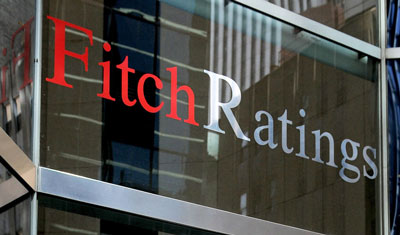Fitch Downgrades Japan to ‘A’; Outlook Stable

Fitch Ratings has downgraded Japan’s Long-Term Foreign and Local Currency Issuer Default Ratings (IDRs) to ‘A’ from ‘A+’. The issue ratings on Japan’s senior unsecured foreign and local currency bonds are also downgraded to ‘A’ from ‘A+’. The Outlooks on the Long-Term IDRs are Stable. The Country Ceiling is downgraded to ‘AA’ from ‘AA+’ and the Short-Term Foreign Currency IDR is downgraded to ‘F1’ from ‘F1+’.
KEY RATING DRIVERS
The downgrade of Japan’s IDRs reflects the following key rating drivers:-
- Fitch’s downgrade reflects the fact that the Japanese government did not include sufficient structural fiscal measures in its budget for the fiscal year April 2015-March 2016 (FY15) to replace a deferred consumption tax increase. The agency had placed Japan’s IDRs on Rating Watch Negative on 9 December 2014 following the government’s decision to delay the scheduled consumption tax increase that was the centrepiece of its medium-term fiscal consolidation effort. At that time, Fitch said the ratings would be downgraded in the absence of broadly equivalent fiscal measures to replace the deferred consumption tax increase in the FY15 budget.
- The FY15 budget cut corporate tax rates, although the base was broadened, making the measure’s impact broadly neutral overall. However, the government has said it wants to cut corporate tax rates again in FY16. The government also introduced a supplementary budget for FY14 in January 2015 that essentially spent an unexpected increase in revenue. These developments increase Fitch’s uncertainty over the degree of political commitment to fiscal consolidation. The government is set to unveil a new fiscal strategy in the summer of 2015. The details of the strategy will be important, but the strength of the government’s commitment to implement it will be even more important and will only become clearer over time.
- The government may still achieve its interim fiscal target of a 3.3% of GDP primary budget deficit (excluding earthquake reconstruction spending) in FY15. Corporate tax receipts are rising strongly, despite the rate cut, driven by buoyant corporate profits. High dividend payments are also boosting personal income tax receipts. The government expects these items, together with the lagged effect of the 2014 consumption tax hike, to generate about 0.6% of GDP in additional revenue in FY15. However, corporate profits are being boosted partly by the 8% trade-weighted depreciation of the Japanese yen in the twelve months to end-March 2015. This is unlikely to be sustainable. Pressure on the budget could rise in FY16 if corporate profits fell back.
- Japan’s main sovereign credit and rating weakness is the high and rising level of government debt. Fitch projects the gross general government (GG) debt to GDP ratio to rise to 244% of GDP by end-2015, by far the highest ratio of any rated sovereign. The Japanese sovereign also has a large stock of assets. The GG held financial assets worth 113% of GDP at end-2014, including foreign reserves worth about 27% of GDP. However, the agency focuses on gross indebtedness in assessing sovereign solvency, as described in our sovereign rating criteria. Japan’s net GG financial liabilities are still the highest in the OECD (143% of GDP at end-2014). The rise in Japan’s net GG financial liability ratio (62pp) over the period 2007-2014 was the second-highest in the OECD behind Ireland (83pp), suggesting the net position is also deteriorating relatively rapidly.
- Japan’s gross GG debt to GDP ratio is projected to stabilise around 250% of GDP in 2020 under Fitch’s baseline fiscal projection. However, Fitch’s analysis indicates that the debt dynamics are highly vulnerable to variations in parameters such as economic growth, the budget deficit, or yields. This vulnerability is a negative factor for the ratings.
- The Japanese sovereign’s exceptionally strong financing flexibility supports the ratings, despite weaknesses and vulnerabilities elsewhere in the public finances. The ten-year Japanese government bond (JGB) yield has averaged 0.34% year-to-date (as of 23 April 2015), down from 0.55% in 2014. The average maturity of the JGB stock has gradually lengthened to 7 years and 10 months by December 2014, from 5 years and 1 month in March 2005.
- Sovereign funding flexibility rests mainly on the massive stock of savings of the Japanese private sector and the strong “home bias” with which these savings are invested. The Japanese domestic non-financial sector had 689% of GDP in assets at end-2014, up from 564% at end-2008. The Japanese household sector ran a financial surplus of 4.2% of GDP in 2014, above the five-year average of 3.8%. About half of the JGB stock is held in the broader public sector, which reduces the possibility of a self-fulfilling loss of confidence in the JGB market.
- High private-sector savings also support the external finances, which are a credit strength. The sovereign had USD1.26trn in foreign reserves at end-2014, underpinning a net sovereign foreign-currency creditor position worth 29% of GDP at end-2014, stronger than the ‘A’ or ‘AA’ medians. Fitch projects the Japanese economy as a whole to hold a net creditor position in debt-like assets worth about 76% of GDP by end-2015. The overall international investment position recorded net assets worth about 66% of GDP by end-September 2014 (latest available), up from 33% at end-2005.
- Sovereign financing flexibility is currently being supported by the Bank of Japan’s (BoJ’s) quantitative and qualitative easing policies. The BoJ’s holdings of government securities rose to 27.3% of the stock at end-March 2015, from 12.1% at end-2012 (according to BoJ data). The role of the BoJ as supplier of a global reserve currency endows Japan with exceptional policy flexibility and supports the sovereign’s funding position. These factors are strengths in the credit profile. However, the BoJ will face a challenge in eventually unwinding the expansion of its balance sheet without triggering a sharp rise in financial-market volatility.
- Japan’s macroeconomic performance is a rating weakness. Fitch cut its forecast for 2015 growth to 1.3% in March 2015 from 1.5% in December 2014, driven by the weaker-than-expected recovery in domestic demand following the April 2014 consumption tax hike. The five-year-average growth rate (2011-2015) of 0.8% is well below the medians for the ‘A’ range (3.1%) or for the Organisation for Economic Co-operation and Development group of richer countries (1.6%). Inflation excluding the effects of the April 2014 consumption tax hike was around zero in February. Prospects for success in permanently lifting the economy’s real and nominal GDP growth rates remain in doubt, two years after the launch of “Abenomics”. Progress on growth-enhancing structural reform remains limited.
- Japan’s ratings are supported by strong credit fundamentals including a high-income, wealthy economy; high governance standards; strong core public institutions; and deeply-entrenched social and political stability.
RATING SENSITIVITIES
The Stable Outlooks reflect Fitch’s assessment that upside and downside risks to the ratings are currently broadly balanced.
The main factors that could, individually or collectively, lead to a negative rating action are:
- Evidence that the authorities’ commitment to fiscal consolidation was weakening, such as failure to articulate a clear and credible strategy for stabilising public debt ratios, or slippage relative to targets
- Weaker macroeconomic performance than Fitch expects for a sustained period, intensifying the challenge in stabilising the public finances
- A sharp and sustained rise in real interest rates demanded by investors to hold government debt
The main factors that could, individually or collectively, lead to a positive rating action, are:
- Stabilisation of public debt ratios; growing confidence that public indebtedness could achieve a sustainable downwards path that was reasonably robust to cyclical economic volatility
- Sustained and broad-based economic recovery, including acceleration in nominal GDP growth
KEY ASSUMPTIONS
Fitch assumes that the confidence of the Japanese public in the country’s basic economic and financial stability is maintained, such that the Japanese sovereign’s exceptional funding flexibility remains intact
Fitch further assumes that there is no significant escalation of global or regional geopolitical risks, for example Japan’s maritime territorial disputes with China, to a level that could disrupt economic activity
Source: FitchRatings – Fitch Downgrades Japan to ‘A’; Outlook Stable





























